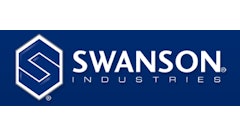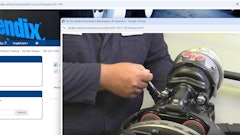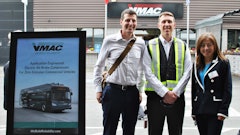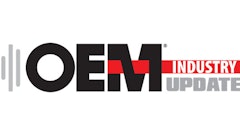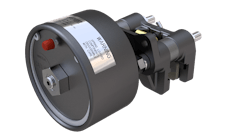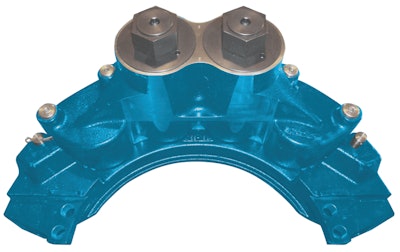
While the basic principles involved with brake design have not changed much over the years, the system’s technologies have had to adapt to the higher speeds and larger weights of vehicles. To meet this need, brake manufacturers continue to update or redesign their products.
Carlisle Brake and Friction (CBF) is currently working on expanding its SA Series of spring-applied, hydraulically released (SAHR) park brakes for heavy-duty vehicles. SAHR brakes use springs to provide a clamp force for braking and hydraulic power to disengage the brake. At the moment, CBF offers brakes with a clamp force of 2,500 lbs., 7,000 lbs. and 14,000 lbs. According to Colm Gallagher, Director of Marketing at CBF, there is a need in the market for park brakes with a 10,000 lb. and 20,000 lb. clamp force. He says this extended product offering will “cover essentially all construction vehicle applications and most mining applications, as well.”
CBF is also working on a service brake that will be used on some of the largest mining trucks in the market. Gallagher notes that as vehicles get larger, braking performance needs to increase. Scott Schuh, Director of Research and Development at CBF, says customers are looking for caliper disc brakes that increase performance in terms of clamp force. With this new service brake design “we are able to increase the lining area,” says Schuh, “so there’s less energy per square inch going into the linings which will result in a reduced wear rate.” Though initially developed for a large mining truck, the service brake will also have applications in other industries.
It’s electric
While many brake systems use hydraulic or mechanical actuation to de-energize a vehicle, MICO Inc. has found that many vehicle manufacturers are moving towards electrohydraulics. This type of braking system combines the flexibility of electronics with the power of hydraulics.
“Electrohydraulics is critical to the future of off-highway vehicle design,” says Len Walton, MICO’s Director of Sales and Marketing. Manfred Maiers, the company’s Electrohydraulics Group Director, says customers started asking for electrohydraulic brakes about 15 years ago because of the improved performance and system features. “This is especially true for equipment that is driven autonomously or where brakes have to be applied from multiple locations,” Maiers says. Walton notes that the flexibility and monitoring capabilities were one of the reasons Great Lakes Power chose the electrohydraulic system when designing its ST35 straddle carrier.
The system contains an electronic pedal and angle sensor which reads the brake pedal angle and transmits a signal electronically to the electronic control unit (ECU). A current is then passed from the ECU to the pressure-modulating valve used to pressurize the brakes, thus causing them to keep a vehicle stationary.
Features of the system include a programmable ECU adjustable to the needs of the vehicle, allowing more or less brake sensitivity when necessary. Noise in the cab of the vehicle is decreased because the modulating valve has been moved closer to the brakes. The closer proximity also reduces the amount of hydraulic line necessary for powering the brakes. Monitoring the brake pedal position helps improve vehicle performance “to prevent driving against applied brakes or being able to detect emergency situations,” says Maiers.
Creating friction
Friction performance is an important aspect to brake design because friction material is where motion is converted into energy, causing a vehicle to come to a complete stop. The type of friction material used is dependent upon the type of brake system. Friction discs, brake pads and brake linings are the most commonly used friction parts.
For heavy-duty on-road applications, such as in class 8 trucks, Marathon Brake Systems developed HeatStar20 (HS20) for 20,000 lb. axle loads. HS20 is a redesign of the company’s Heat Star (HS) lining which has been used in severe-duty applications for several years. Scott Myers, Director of Marketing at Marathon, says the development came about as part of the company’s continued efforts to provide products that benefit consumer cost per mile.
The lining is composed of a Hi-Density friction formula consisting of higher quality and heavier raw materials. The Hi-Density formula creates a higher mass and enables the lining to handle a large amount of heat by holding more heat energy and efficiently dissipating it. The formula also adds durability by preventing cracking as well as offering fade and water resistance.
Myers notes a durable lining can be important not only to the performance of a vehicle’s braking abilities but to the maintenance costs as well. Because HS20 wears at a slower rate, it can “greatly decrease the frequency of brake relines.” He goes on to say that brake and component replacement during relines can be much more expensive than the initial brake lining purchase. Myers says HS20 is friendlier to brake drums, often enabling the same drum to be reused during the reline of the vehicle.
Wet brake systems
As part of its brake system offerings, CBF develops its own friction products. In 2010 CBF acquired the Hawk Corp. which enabled the company to add more friction technology to its product offerings. While CBF already had some friction technology capabilities, the acquisition of Hawk brought wet friction expertise as well as material development and R&D resources.
Wet friction consists of a series of discs completely enclosed in an axle or wheel end. This keeps the discs safe from any dust or debris which can impede brake performance. Construction and mining vehicles most commonly use wet brakes for this reason. Discs in a wet brake system are immersed in an oil bath as well, providing an internal cooling system. Gallagher says this internal cooling, along with the protection from external elements, makes wet brake systems ideal for underground mining where sparks, common with dry braking systems, are a constant concern.
Wet braking systems have a higher resistance to brake fade than dry brakes as well as the ability to decrease motion. CBF says the oil cooling in wet brakes enables the brakes to be engaged for extended periods of time without a loss of power often caused by heating of the friction surfaces. This is important when you have a vehicle such as a 400 ton mining truck descending several miles into an open pit mine. The vehicle operator can continuously apply the wet brakes to slow the vehicle without reducing performance or causing high wear of the friction material.
Gallagher also notes that wet brake systems generally last longer because the friction materials don’t need to be replaced as frequently as those in dry friction systems. With dry friction, depending on the application, a vehicle owner can expect to get 6,000 to 10,000 hours of performance. However, with wet friction those numbers double. That’s important for a vehicle owner because for every hour a truck is down for maintenance, “there are significant costs to the owners for downtime of a vehicle” says Gallagher.
Dry brake systems
While wet brake systems have many advantages, they are not appropriate for every application. Wet brake systems tend to be heavier and take up more space, which must be taken into account when designing a vehicle.
For vehicles intended for rental fleets, Gallagher notes that a dry brake system is often a better choice. Because not every vehicle operator knows how to use a wet brake system, and vehicles in rental fleets tend to have a different operator every day, the brakes can wear faster and be more costly to replace.
Dry friction works similarly to a car, and is therefore more familiar to the majority of vehicle operators. A dry brake system uses hydraulic fluid to press down on the brake pads in the caliper to slow down the vehicle. The only difference is the brake in your car weighs five to 10 pounds while a caliper brake from a company like CBF can weigh up to 350 pounds.
Reducing vehicle weight
Vehicle weight is a constant issue for manufacturers. Though many vehicles are getting larger and heavier, OEMs are also trying to find ways to reduce vehicle weight in order to meet fuel efficiency and emissions regulations. Because other vehicle systems such as engines are becoming heavier, manufacturers must find other areas from which they can eliminate weight.
Because most vehicles require a service and park brake, a lot of space is taken up and weight added by having two separate systems. To help with this problem, CBF developed a combination park and service brake. The development was brought on by an OEM customer with a space requirement. CBF was able to design a brake that housed the service and park brake in a smaller package. Enabling the park brake to use the service brake’s linings and using just six pistons in the caliper helped to make a more compact system. This combo brake also helped reduce the number of total brakes necessary on the vehicle from seven to six.
The future of brakes
Maiers notes that safety is becoming more of an issue with brake design. Before, he says, brake design was about the heavy-duty machine’s durability and ruggedness. Now that the vehicles are more sophisticated and faster, standards are becoming applicable in more industries than in the past. He says that Safety Integrity Levels (SIL) are just some of the standards that brake manufacturers have to be more aware of.
Along with safety and more of an emphasis on electrohydraulics, Walton says the current trend in brake design is all about utilizing new technology and innovative machine design. Walton says “the new focus is on finding ways to embed intelligence throughout a machine so everything is optimized to work together.”

![Sa P75 I Sahr[80]](https://img.oemoffhighway.com/mindful/acbm/workspaces/default/uploads/2025/10/sa-p75-isahr80.Cn3n79HB4H.jpg?auto=format%2Ccompress&fit=crop&h=100&q=70&w=100)
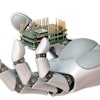

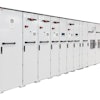
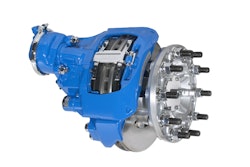
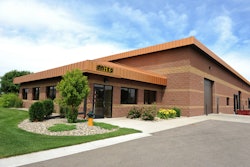
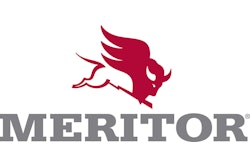
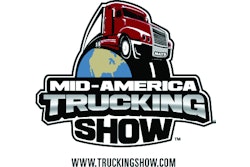
![Sa P75 I Sahr[80]](https://img.oemoffhighway.com/mindful/acbm/workspaces/default/uploads/2025/10/sa-p75-isahr80.Cn3n79HB4H.jpg?ar=16%3A9&auto=format%2Ccompress&fit=crop&h=135&q=70&w=240)

